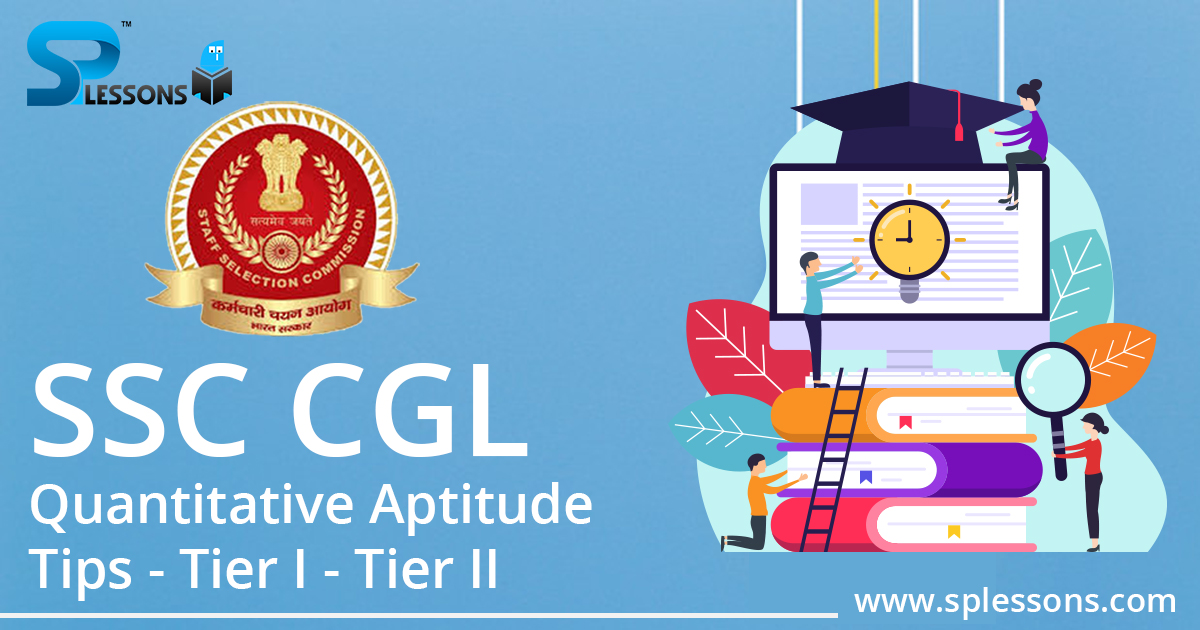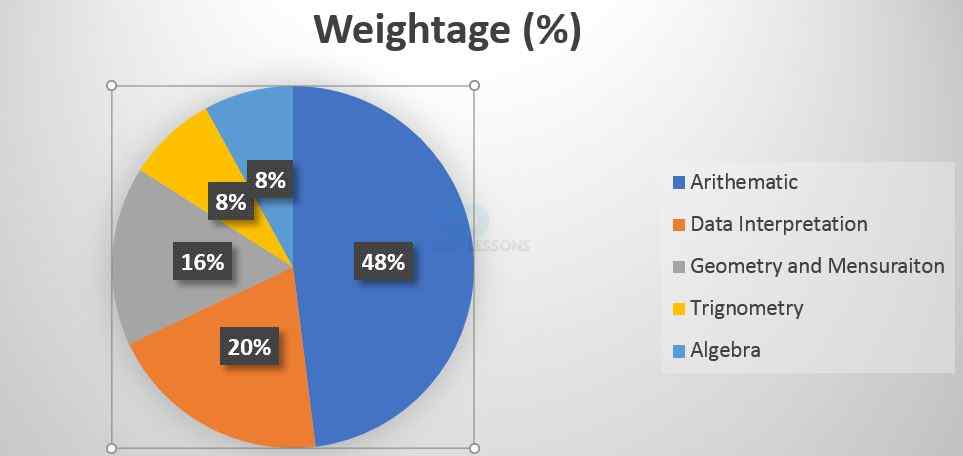 Introduction
Introduction
- Staff Selection Commission (SSC) in India conducts an annual Combined Grade Level (CGL) exam that is commonly known as SSC CGL.
- SSC CGL exam consists of four phases, i.e., Tier-I, Tier-II, Tier-III, and Tier-IV.
- The SSC CGL Tier-I and Tier-II are multiple-choice objective exams. However, there have been various changes in the examination pattern and syllabus of the exam.
- At present, Tier-I is a 60 minutes long online exam that comprises of four sections. Quantitative Aptitude is one of them.
- The section on Quantitative Aptitude in the Tier-I exam consists of 25 questions that account to a maximum of 50 marks. Candidates can also get a negative marking of 0.5 marks for this section.
- Candidates who aspire to qualify the SSC CGL Tier-I exam must create a study plan according to the basic concepts that are necessary to crack this section.
- Further, SSC CGL Tier-II exam is also an objective online exam. The difficulty level of this exam is a bit higher than the Tier-I. Tier-II consists of 100 quant questions that account for a maximum of 200 marks. There is a negative marking of 0.25 marks.
 Quant
Quant
- One of the critical deciding areas for a candidate to be in the merit list of SSC CGL exam is the quantitative aptitude section.
- Candidates who have explicit knowledge of the basic mathematical concepts and formulas can gain strength in this section.
- The pattern of the Tier-I and Tier-II exam is similar for the quantitative aptitude section. Only difficulty level shall differ.
- The figure given below shall reveal the weightage of various topics that the SSC CGL examines.
- The above figure reveals that the category on arithmetic covers the maximum portion of the quantitative aptitude section. Therefore, candidates shall work on the basic concepts of mathematics to achieve good scores.
- In quantitative Aptitude, a link shall exist between all the concepts. In general, the idea of ratio and percentage relates to every concept.
- The next in the category is data interpretation that includes concepts of ratios and percentages.
- Further, the categories of geometry, mensuration, and trigonometry shall require in-depth knowledge. Candidates shall be aware of suitable methods and relating formulas.
- Lastly, algebra shall cover topics like graphs of linear equations and elementary surds.
- Depending on these categories, candidates can decide their strengths and weaknesses. The strategy for preparation must aim to turn the weaknesses into strengths.
 Tips
Tips
Given below are some of the do's and don'ts that candidates must remember while preparing for the exam.
| Activity | Do’s | Don’ts |
|---|---|---|
| Work on the Basics |
|
Candidates shall avoid looking for shortcuts. Once the candidates have a command over the topics, shortcuts or tricks can help them in quick calculations. |
| Time Management |
|
Candidates shall avoid spending more than a minute on solving any one question. |
| Learn Short-cut Methods |
|
Candidates must avoid using the risky shortcuts that are not well-versed. Dangerous shortcuts can lead to misleading, confusion, and wrong answers. |
- The most crucial phase in the SSC CGL exam is clearing the Tier-I exam. This phase is necessary to reach the SSC CGL Tier-II phase.
- The marks that candidates obtain in this tier are taken into consideration in the final list of scores.
- Candidates can gain immense confidence in attempting a few mock tests before the exam. These mock tests shall make the candidates aware of the exact exam pattern and attempt the questions within the given time.
- Candidates can also try to attempt the previous year's paper to get an idea of the difficulty level of the exam.
- If candidates find a particular question difficult, it essential not to waste time trying to solve it. Rather, candidates can move to the next question and come back to it only if the time permits.
- Candidates must aim to clear the sectional cut-off and overall cut-off.
- Candidates can attempt the minimum number of questions to clear the sectional cut-off of the section that is a bit challenging.
- Like many other competitive exams, some questions in the quantitative aptitude section of SSC CGL exam are tricky. Candidates must read them carefully before attempting them.
- Candidates can choose to avoid guesswork and unsure shortcuts.
 Books
Books
| Name of the Book | Author | About the Book |
|---|---|---|
| Quantitative Aptitude for Competitive Examinations | R.S. Aggarwal | The focus of the book is to help candidates practice as much as possible. This practice shall help to transform conceptual clarity into command over topics. |
| Arihant’s Fast Track Objective Arithmetic | Arihant | The book brings a lot of right quality questions with the belief that candidates can get better with practice. |
| Magical Book on Quicker Maths | M Tyra and K Kundan | Each section in the book has extensive exercises that help candidates to practice. |
| Quantitative Aptitude for CAT | Arun Sharma |
|
| Quicker Maths | M Tyra | The book provides an exhaustive list of questions according to the difficulty level of easy, moderate, and difficult. Candidates can recognize the level of difficulty while practicing. |
| Fast Track Objective Arithmetic | Arihant Publications | There are two types of questions in this book:
|
| Elementary and Advanced Mathematics | Kiran Publication | This book is a must-have for candidates with the non-mathematical background. The book is a rich collection of fundamentals. |
Note: All these books can help to gain concepts before the candidate begin to practice. The quantitative Aptitude requires regular practice for candidates to solve questions within the given time frame.








